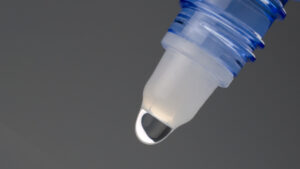
Today’s question comes from Robert W. in Pinole who asks “I bought a [name of brand deleted] bike recently and when I was using it the front fork cracked, broke, and sent me over the handlebars where I landed on my head and shoulder. Thank God I was wearing a helmet. My head is OK, but I broke my shoulder. My research shows that the bike frame was probably made in China. I bought the bike at a local store, not a chain, they said they would refund me my money or give me a replacement frame. When I asked if they would pay my medical bills they told me that they are not responsible, and I need to go after the manufacturer in China. How do I do that?”
Robert, what you describe is a classic case of what we call a “defective product.” California has a well-developed body of law designed to deal with defective products. A “product” can be anything from bottled water/food all the way through large hard-goods such as cars, motor-homes and/or planes. A bicycle is a product under the law.
A product is not defective simply because someone is injured while using it. Indeed, misuse is one defense available to a defendant in a product defect case. For example, if you were doing jumps on a road bike you probably misused the product and the may likely be considered to be your own fault.
Product defect law breaks down into three categories: 1) a design defect; 2) a manufacturing defect; 3) a failure to warn or, in some instances, all three. What you present may be a design defect, manufacturing defect, or both. Having not seen the bike, I can’t say which most likely applies. My firm has handled many such cases including defective breaks, pedals, wheels/spokes, front fork separations and defective tires. Two years ago, we handled a case involving a defective basket which was mounted to the front handlebars. It was constructed such that it bounced off its mounting, fell on the front wheel, and caused the bike to go out of control as it ran over the basket. As in your case, defects in bicycles can lead to personal injury and, unfortunately, as I have seen, death. While I am sorry to hear that you were injured, I am grateful that you did not suffer brain damage (thanks to your helmet) or worse.
There is an aspect of liability called “strict product liability” which says that a manufacturer is liable if, when the product left the particular manufacturers control, it differed from the manufacturer’s intended result or from apparently identical products of the same manufacturer, and the product was used in a manner reasonably foreseeable by the defendant but nonetheless caused a person injury. A well-known example involves a bottle of coke which exploded as a consumer was trying to open it.
A plaintiff’s burden in a manufacturing defect case is to demonstrate that there was a flaw in the manufacturing process—i.e., that the product deviated from the manufacturer’s design or specifications and was manufactured differently from the prototype. To prevail a plaintiff must show that the product was in the same condition as when it left the manufacturer. If the product has been altered in such a way that it is materially different than when it left the manufacturer, either from misuse or some material modification, then liability might be precluded against the manufacture. In your case there may be a defect in the assembly, a “metallurgical defect,” or in the case of a carbon fiber frame a lamination defect which may have caused the failure. This would need to be analyzed by an expert such as a qualified metallurgist or mechanical/process engineer. We often retain such experts when evaluating a product failure.
A “perfectly manufactured” product may still be defective because of a flaw in its design. Again, the product must be materially the same at the time of failure as when it left the manufacturer. This type of defect may exist if there is an engineering flaw which causes failure based on stress loads, a failure to incorporate a safety device or for other similar reasons. Design defect liability may be established under either (or both) of two alternative tests commonly known as the “consumer expectation” and “risk-benefit” tests. A product is defective in design if it failed to perform as safely as an ordinary consumer would expect (or have a right to expect) when using the product in an intended or reasonably foreseeable manner.
The “risk-benefit” test is one which analyzes whether the inherent dangers involving the use of a product outweigh its benefits. A design defect may exist because, considering relevant factors judged in hindsight, the risk of danger inherent in the challenged design outweighs the benefit of the design. Some of the factors considered in such an analysis include: the gravity of the danger imposed by the design; the likelihood that such danger would cause injury; the mechanical feasibility of a safer alternative design; the financial cost of an improved design; and the adverse consequences to the product and consumers that would result from an alternative design. A manufacturer, while obligated to consider “foreseeable misuse,” is not required to make a product “foolproof”. For example, no liability was found to exist when a consumer picked up a lawnmower in an attempt to trim a hedge thereby losing some fingers.
Recovery on a theory of negligent design involves balancing the likelihood and gravity of potential harm from a given design against the burden of the measures required to avoid the harm. If the likelihood and gravity of harm outweigh the design’s utility/benefit, the manufacturer may be found negligent for having placed the product on the market regardless of any product warnings the manufacturer may have provided.
Finally, the bike shop is wrong: a strong public policy exists mandating that anyone involved in the “chain of distribution” is liable to the consumer for injury caused by a defective product. This is because they are profiting off the product and they are in a better position to insure against injury by purchasing insurance or by increasing their price to take into consideration the costs of potential injuries. If the costs of purchasing insurance, paying claims, or paying damages through a lawsuit, makes the product too expensive for the consumer’s tastes then, by market forces, it will fail and be removed from the marketplace. Unfortunately, by that time many people may have suffered or died. This is all too often the case when manufacturers put profits over people such as in the case of defective pharmaceuticals or medical devices.
I suggest that you don’t alter the bike, don’t have it fixed or throw out any of the parts, and get it to a Trial Lawyer who can have the proper experts examine it to see if you have a case.









